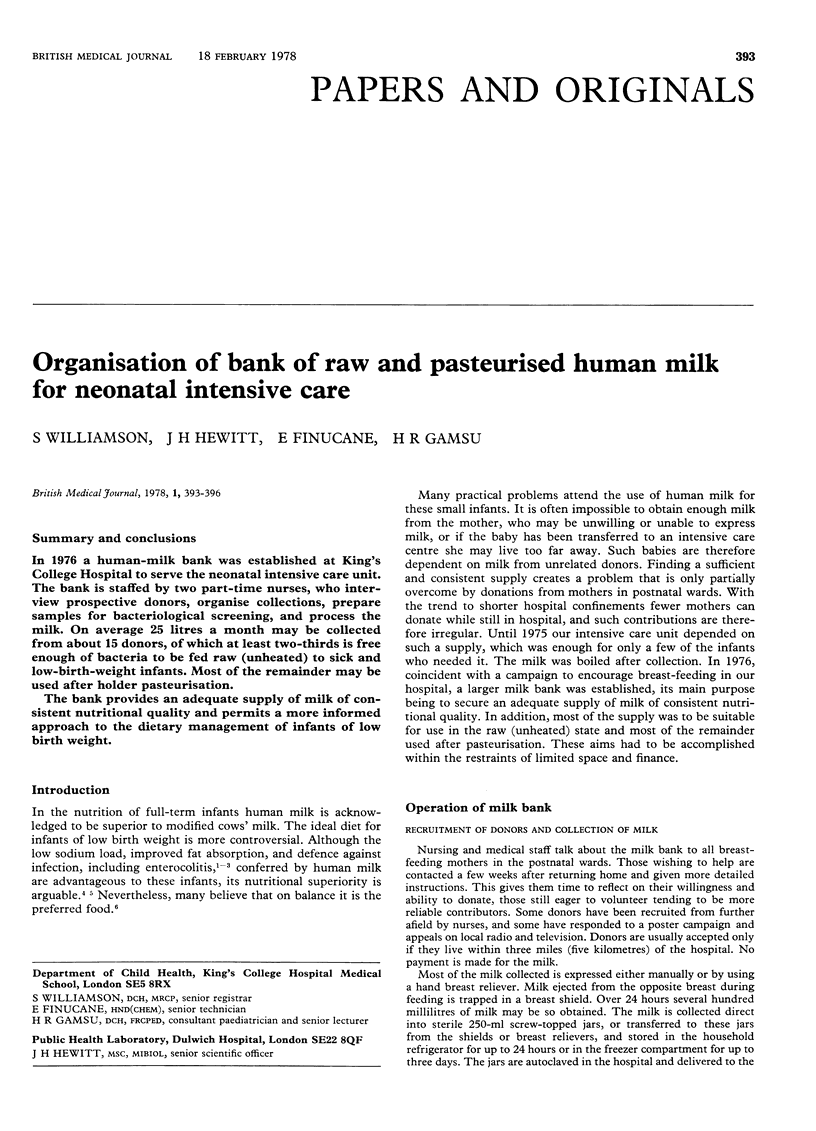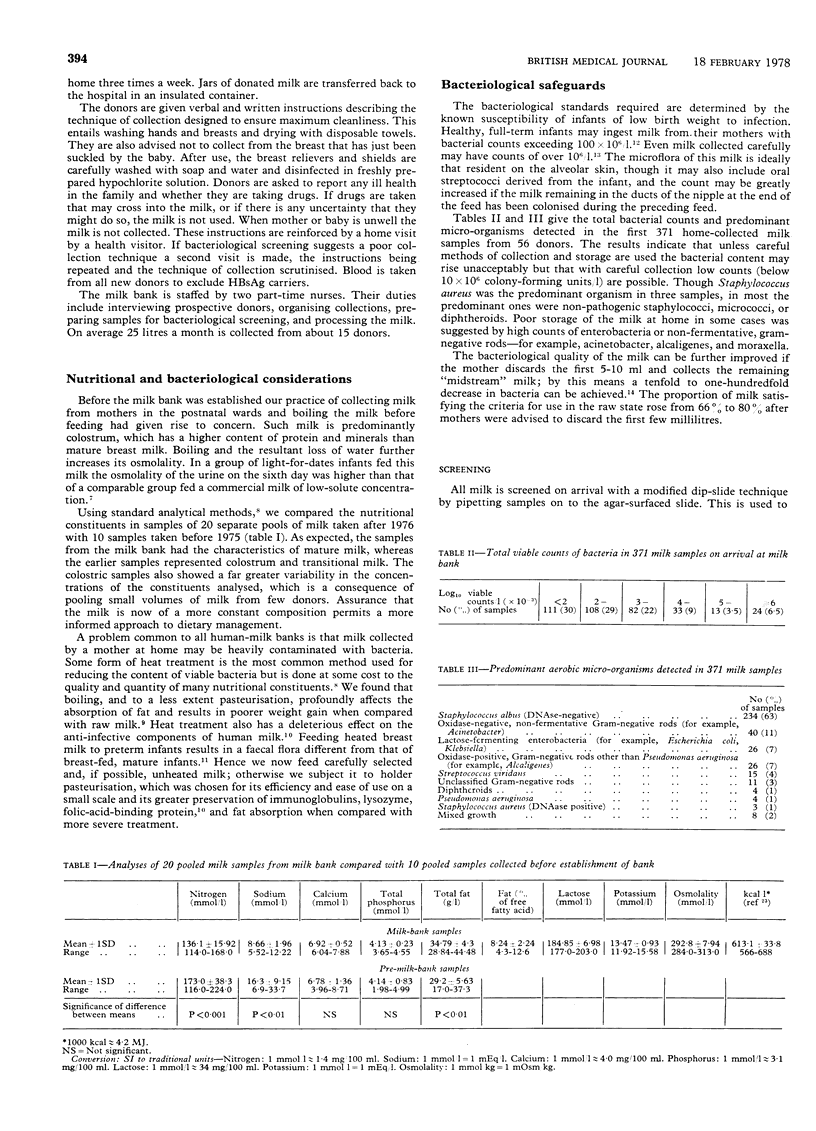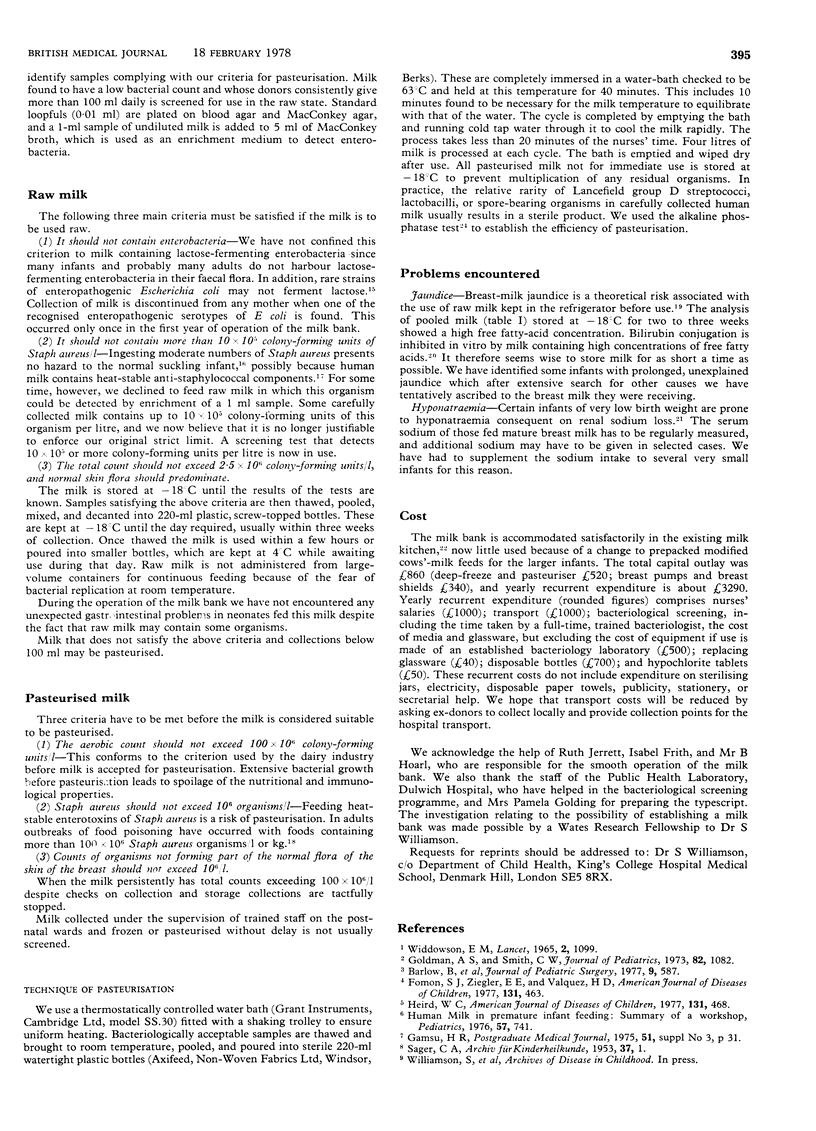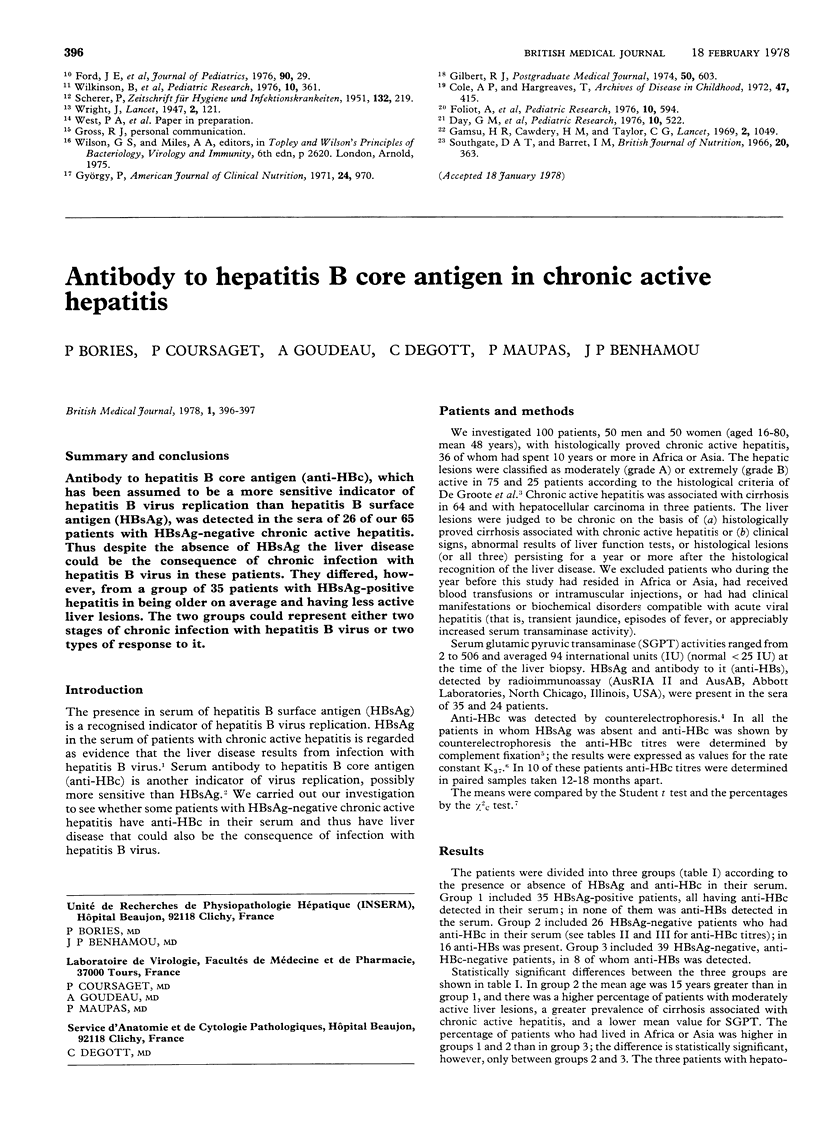Abstract
In 1976 a human-milk bank was established at King's College Hospital to serve the neonatal intensive care unit. The bank is staffed by two part-time nurses, who interview prospective donors, organise collections, prepare samples for bacteriological screening, and process the milk. On average 25 litres a month may be collected from about 15 donors, of which at least two-thirds is free enough of bacteria to be fed raw (unheated) to sick and low-birth-weight infants. Most of the remainder may be used after holder pasteurisation. The bank provides an adequate supply of milk of consistent nutritional quality and permits a more informed approach to the dietary management of infants of low birth weight.
Full text
PDF



Selected References
These references are in PubMed. This may not be the complete list of references from this article.
- Cole A. P., Hargreaves T. Conjugation inhibitors and early neonatal hyperbilirubinaemia. Arch Dis Child. 1972 Jun;47(253):415–418. doi: 10.1136/adc.47.253.415. [DOI] [PMC free article] [PubMed] [Google Scholar]
- Day G. M., Radde I. C., Balfe J. W., Chance G. W. Electrolyte abnormalities in very low birthweight infants. Pediatr Res. 1976 May;10(5):522–526. doi: 10.1203/00006450-197605000-00003. [DOI] [PubMed] [Google Scholar]
- Foliot A., Ploussard J. P., Housset E., Christoforov Breast milk jaundice: in vitro inhibition of rat liver bilirubin-uridine diphosphate glucuronyltransferase activity and Z protein-bromosulfophthalein binding by human breast milk. Pediatr Res. 1976 Jun;10(6):594–598. doi: 10.1203/00006450-197606000-00007. [DOI] [PubMed] [Google Scholar]
- Fomon S. J., Ziegler E. E., Vázquez H. D. Human milk and the small premature infant. Am J Dis Child. 1977 Apr;131(4):463–467. doi: 10.1001/archpedi.1977.02120170089018. [DOI] [PubMed] [Google Scholar]
- Gamsu H. R., Cawdery H. M., Taylor C. G. Hospital milk kitchen. Lancet. 1969 Nov 15;2(7629):1049–1050. doi: 10.1016/s0140-6736(69)90648-5. [DOI] [PubMed] [Google Scholar]
- Goldman A. S., Smith C. W. Host resistance factors in human milk. J Pediatr. 1973 Jun;82(6):1082–1090. doi: 10.1016/s0022-3476(73)80453-6. [DOI] [PubMed] [Google Scholar]
- Heird W. C. Feeding the premature infant: human milk or an artificial formula? Am J Dis Child. 1977 Apr;131(4):468–469. doi: 10.1001/archpedi.1977.02120170094019. [DOI] [PubMed] [Google Scholar]
- Southgate D. A., Barrett I. M. The intake and excretion of calorific constituents of milk by babies. Br J Nutr. 1966;20(2):363–372. doi: 10.1079/bjn19660036. [DOI] [PubMed] [Google Scholar]
- Widdowson E. M. Absorption and excretion of fat, nitrogen, and minerals from "filled" milks by babies one week old. Lancet. 1965 Nov 27;2(7422):1099–1105. doi: 10.1016/s0140-6736(65)90065-6. [DOI] [PubMed] [Google Scholar]


